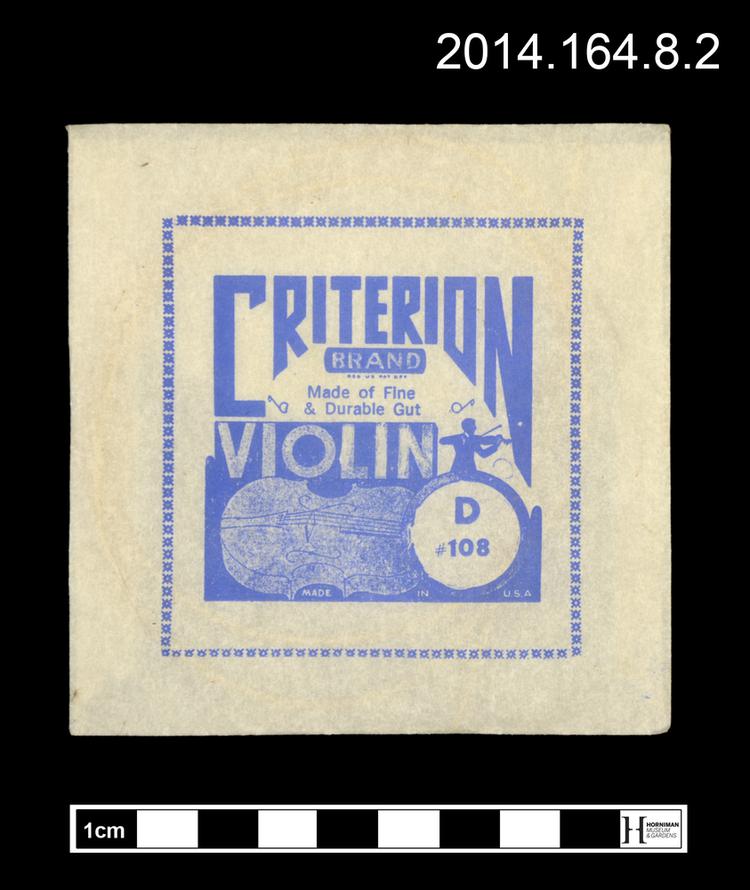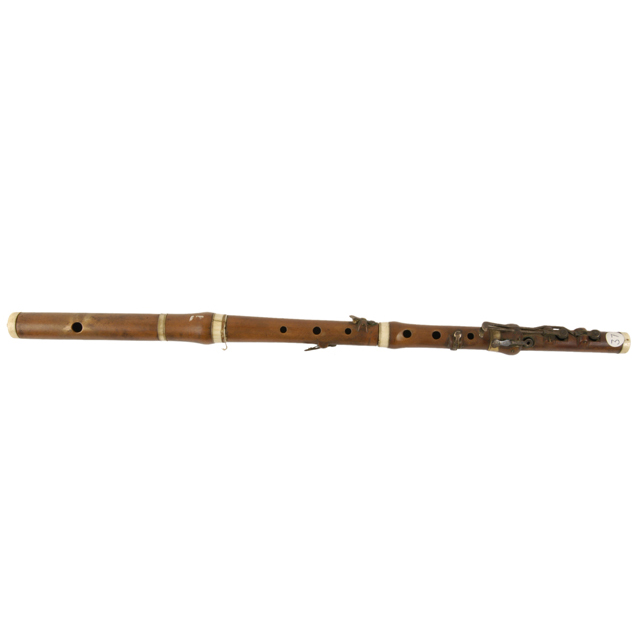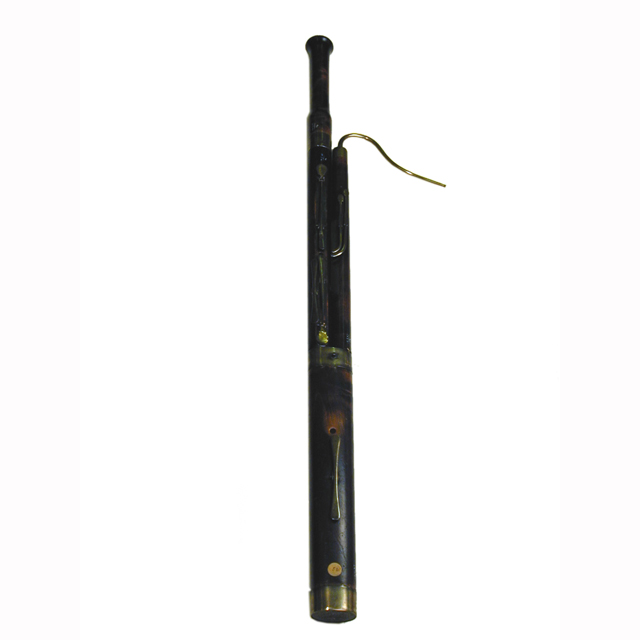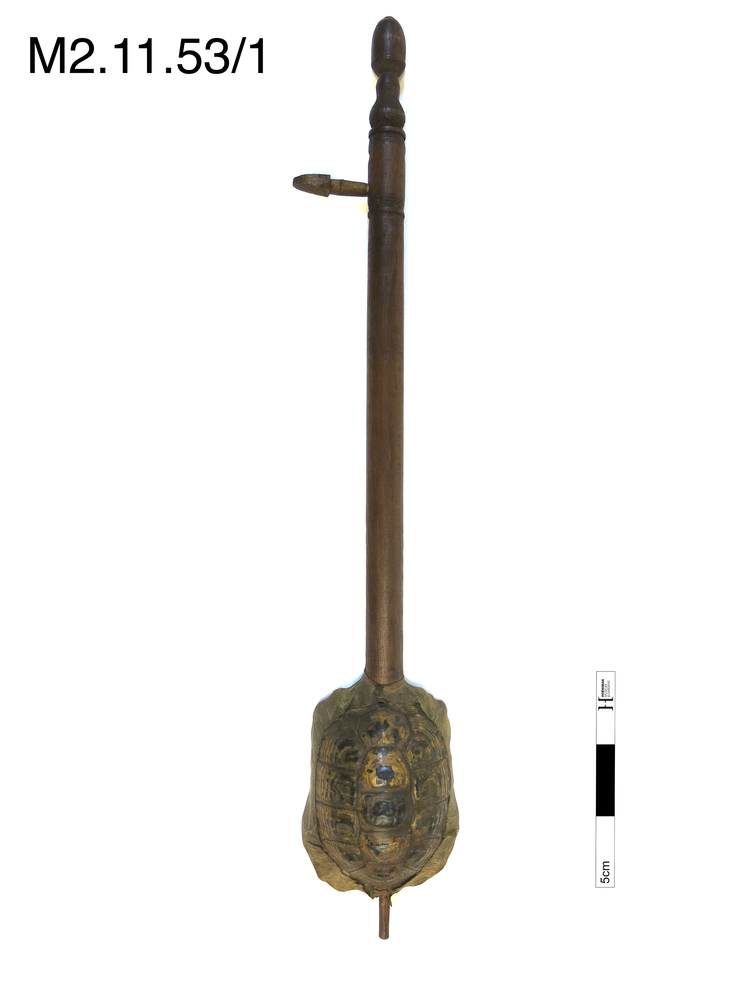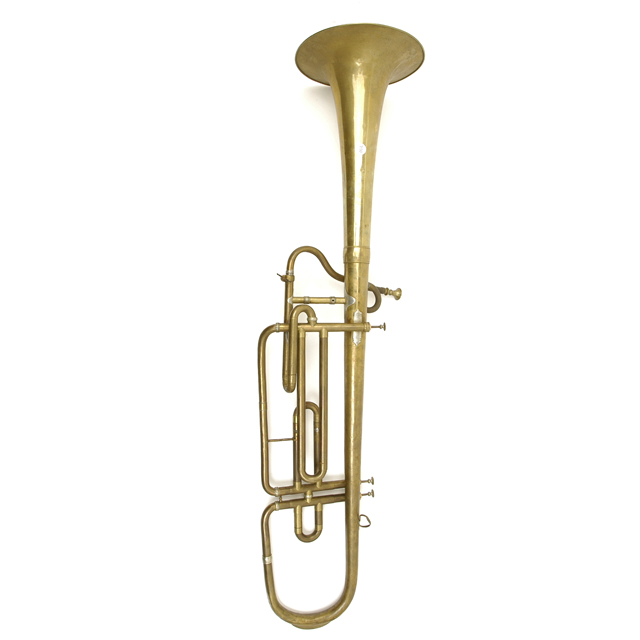
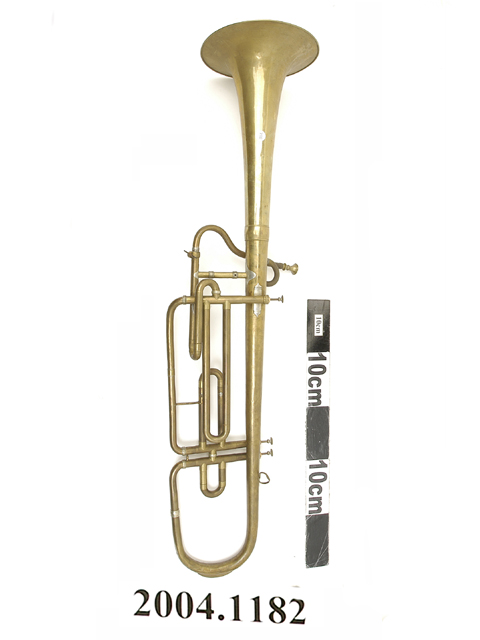
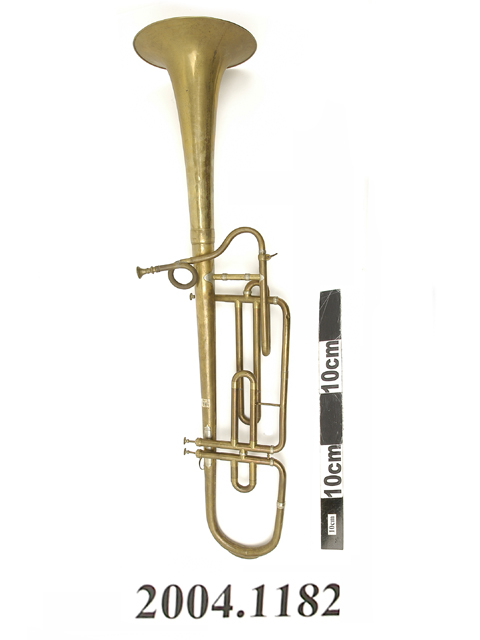
Clavicor in D. Brass body with nickel silver-plated ferrules and finger buttons. Three Stölzel valves, one for the left hand (lowering the pitch by a tone and a half) and two for the right. Screw bell (the bell flare is a separate section fitted to the body by means of threaded collar). Two crooks, one with a swan neck, the other with a loop. Crooks held in place with butterfly screw fitting. Brass mouthpiece.
The clavicor was invented in 1837 by H. Danays in Paris and was commonly used as the alto or tenor brass instrument in military bands before these roles were taken over by saxhorn-type tenor horns and baritones. The three valves on this model are arranged so that two are operated by the right hand and one by the left. This indicates that the instrument dates from the first few years of clavicor manufacture, as later instruments (from the early 1840s onwards) have the three valves arranged in a line so that all are operated by the right hand. 2004.1159 is an example of this later design.



